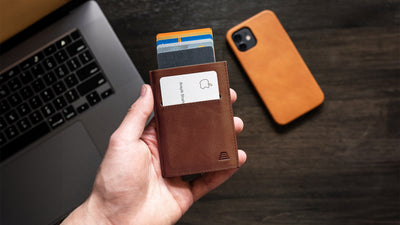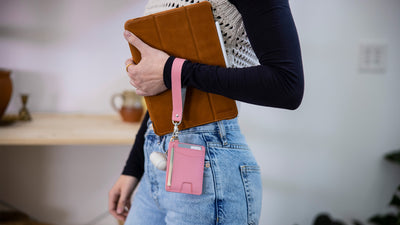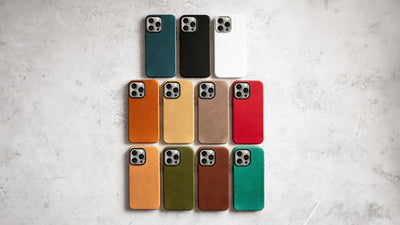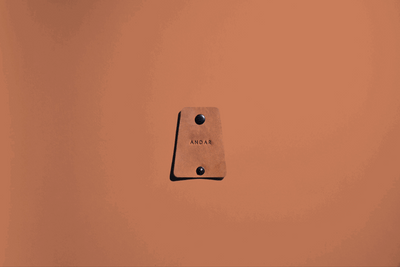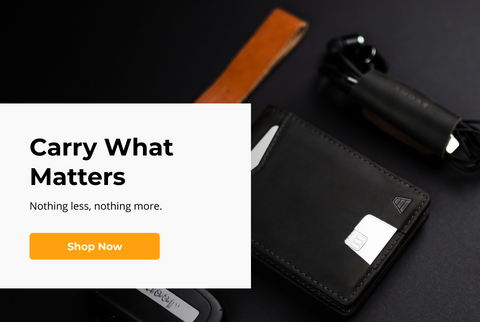The Blog
EDC Loadout: How To Build Your Best Everyday Carry Gear List
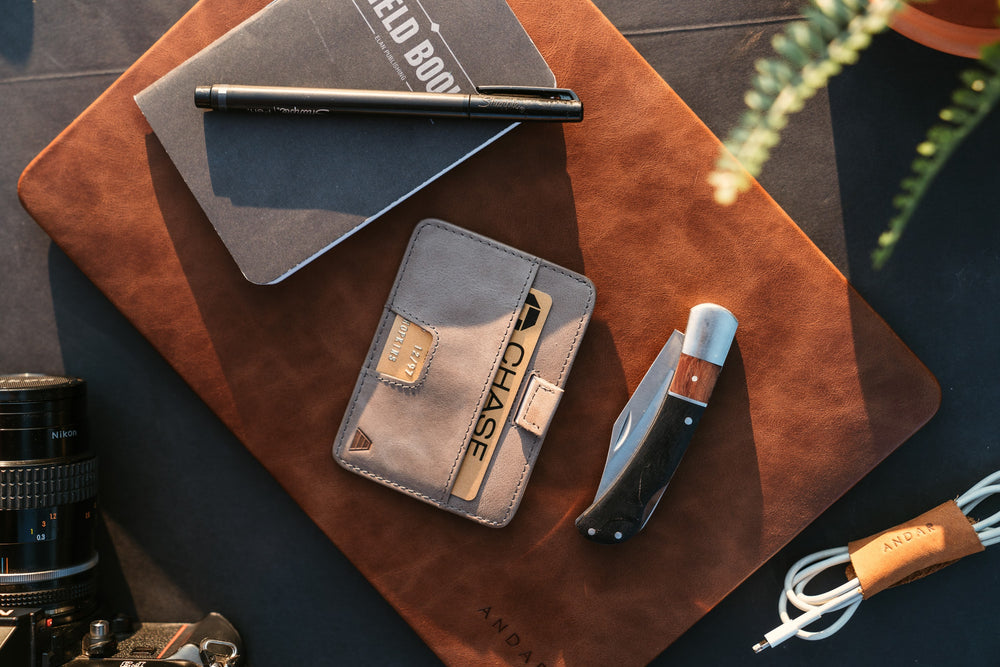
Preparation is something that some people are naturally very good at. They can stay two steps ahead of any situation, they can anticipate issues or needs before they happen, and they can definitely save the day almost any day. However, some people might need a bit of coaching on being prepared. This is completely fine (and honestly a bit more natural).
If you want to work on your general preparedness in everyday life, be it for your job, spouse, kids, friends, whatever, intentionally building your Everyday Carry (or EDC) is the first step in this process. Your EDC consists of the things that you carry on you at all times, no matter what.
In this article, we will go through the many steps of building your very own personalized EDC, along with a few suggestions of how to effectively work through finding the best gear for any situation you may run into.
Step 1: Sit Down and Have a Think
The first part of building your very own personalized EDC is going to inform the rest of your decisions. All you have to do is sit down and think about your life (non-existentially) and what you do every day. Think about your job(s), your hobbies, what kinds of people you hang around with. Each of these will impact what gear you might need to include in your EDC.
What Does Your Job Require?
On average, an American adult spends around a third of their life working. This means your EDC should take this into strong consideration, as another third of your life is spent sleeping. This means half of your waking life you will be working (not to scare you).
Consider what you do for a living and what you need to effectively do your job. Do you work retail and have to break down boxes often? Are you a worker in an office building where you deal with computer chords all day? Do you own a small business where you are constantly repairing tables and chairs?
All of these questions will shape how you should build your EDC, so consider them carefully. For example, it would be inefficient for a barista to wear earphones while on the job, as they need to hear orders, communicate with coworkers, etc. In the same vein, it would be near irresponsible (and potentially illegal) for a rideshare driver not to have earphones for safely calling their customers.
Because your job takes up so much of your life, and because performance there means so much for your livelihood, this should be one of the first and most important things to consider when having a think about your EDC.
What Are Your Hobbies?
Hobbies are what keep many people going, as they are free and based on your passions. Because of this, thinking about what hobbies you have can inform what you include in your EDC as well.
If you are a birdwatcher, there are going to be things that you should have on your person at almost any time, given the randomness and excitement of seeing a new bird. If you are a fan of mobile games, a mobile charger will be essential to keep your mobile device alive. Do you surf? Wax, a board, a wetsuit, and many other essentials to surfing should be considered. EDCs generally include what is in your vehicle as well as on your person.
These hobbies are important parts of our lives, and being prepared to fully enjoy them will make them even more enjoyable. On top of this, once you develop and implement your EDC for your hobbies, you will not have to worry about forgetting something that will ruin your Saturday morning bike ride anymore!
Expecting the Unexpected
While this idiom is an oxymoron that has turned cliché, it is helpful when thinking about your EDC and extended EDC (to be discussed later). Think about what situations could arise that you will want some emergency gear to help with.
This could include:
- First Aid
- Flashlight
- Mace
- Knife
- Rope
You may still want other pieces of emergency equipment. Along with specialized materials for medical conditions such as an inhaler for asthma, insulin for diabetes, an EpiPen for allergic reactions, there is a vast array of emergency materials that could save your life or somebody else’s. It’s a good idea to keep a stocked first aid kit in your car as well as your home.
Once you have thought about these three big steps, you are well on your way to building your EDC to keep yourself prepared for the majority of situations you might run into in your everyday life.
Step 2: Research Your Gear
This is the step that might take the longest and is genuinely a step of more trial-and-error than a one-time thing. Since gear can always be swapped and updated and the fact that some people religiously preach certain brands of gear, it can be a dizzying experience trying to do it all in one go.
So, research as much as you are comfortable with, then try it out. A good EDC is about minimalism. For example, if you can have a smaller wallet, get a smaller wallet (Andar has some great wallet options such as The Duke). If you can get by with a more compact knife, get a smaller knife.
There are a few categories that might help improve your research. Next, we will walk through the categories that should be in your mind as you think about what gear you want to include in your EDC.
How Much Are You Willing To Spend?
One of the biggest problems with trying to research, purchase, and implement an EDC kit all in one sitting is that sometimes quality items will cost a bit more. This will vary depending on your budget, but in general, we recommend finding quality materials and items that will last so that you can count on the things that you buy and not worry about their longevity as much as their functionality.
We recommend dividing your EDC into three general camps: your basic, advanced, and super EDCs. Further on, we will explain what each of these means, but they are generally listed in order of importance. So, dividing your funds first to your basic, then to advanced, then to your super is the best way to go about it.
In addition, we recommend getting your most essential and expensive items first. For example, if you are building your basic EDC and have an item that costs much more than the others in your advanced or even super EDCs, you should get that one first. It is one of the cornerstones of your setup. Prioritize quality and usability when first figuring out your budget, then go from there.
In addition, we would recommend making sure there are policies of return or good warranties on the items you do purchase. Suffice it to say that being extra cautious when buying important everyday things is wise.
How Much Space Do You Have?
One of the more annoying but practical questions you need to answer before truly diving into building your EDC is how you are going to carry it. For example, if you are not going to lug around a duffle bag wherever you go, you probably should not invest in big, bulky (though no doubt useful) gear.
If you have a reliable backpack, take that into consideration. If you are storing parts of your EDC in your car, take that into consideration while also understanding the security of where you generally park your car.
While it may seem wise to include all the possible storage you have, we would generally recommend keeping the three major categories in your mind while you think about space. Your basic EDC should fit in your pockets and on your person without a bag. Your Advanced EDC can include a small bag such as a slim purse or backpack. Your Super EDC can include a large bag or even car space.
Try to keep your EDC sleek and trim enough to not look as valuable as it is, especially if you generally find yourself in areas where they might get stolen. Always think about the situations you find yourself in and if carrying a certain piece of equipment will, in the end, lead to more of a problem than a solution.
What Brands Do You Trust?
After taking into consideration your pocketbook and your physical ability to wield certain items, it is time to research your brands. This is always a personal choice, and sometimes the wider you cast your net, the more confused and frustrated you may become.
In general, try to stick with brands you have used and trusted before for other pieces of equipment, as this is always the best place to start. Ask your friends about their EDC and which quality brands to trust. In general, brands that make quality items will pop up, and if they are within your price range, they will serve you well.
However, this stage is the most trial-and-error segment of the whole process, so prioritize what is most important to you, then move from there.
Once you have done your research and thought about all aspects of what you might need, it is time to assemble your three load-outs of EDCs. These are general categories that can be tweaked for your everyday life, but in general, these seem to work best.
Step 3: Build Your Basic EDC
As explained above, these are general categories, but they are helpful to make sure you are not being overburdened for your Tuesday lunch meeting by lugging in a suitcase of survival gear. That definitely will not help you close the sale. Because of this, we will focus on what is known as the Basic EDC in most circles.
The Basic EDC is generally the items that you carry with you everywhere, every day. This is the true bedrock of your EDC, and some people even stop here when building their EDC (not recommended, as the other load-outs will benefit you as well).
It is generally confined to what fits in your pockets and is easily concealable. In general, there are a few classics in the world of the Basic EDC.
The Wallet
Your wallet is undeniably important. It houses some of your most prized possessions, and people will generally always be carrying one. Your ID cards, credit cards, cash, gift cards, pictures, and anything else you house in your wallet is extremely important to you, which is why you keep them all together instead of rustling around in your pockets.
A few things to be aware of when trying to find the perfect wallet:
- Size
- Security
- Style
If they are too large, you might have back problems from sitting on them; in addition, they will look bulky in your pants. Find a wallet that fits all of your cards and still maintains a sleek design.
Security is perhaps the most underrated yet important part of picking out a wallet to buy. Thieves can now pickpocket you by not even touching you through electronic pickpocketing.
They will scan your credit card information through your non-RFID-enabled wallet and through your clothes. This is becoming more and more common. Because of this, it is essential to have an RFID-enabled wallet and credit card.
Style is always a personal taste, but be sure not to sacrifice other important things such as security for it. There are tons of great-looking Andar wallets that still fit your needs.
Headphones
This is one of the more common pieces of your EDC that some people would not be able to live without. Headphones are not just for entertainment as they allow us to complete phone calls, participate in meetings, and stay connected with others in general without disturbing everybody in the workplace.
Obviously, the headphones you choose are a decision in and of itself, but there are also items that help protect and organize your headphones to keep them useful.
If you have AirPods, consider buying a case for your AirPods case. The plastic covering can sometimes be easily damaged. The Capsule keeps your Airpods from taking a tumble and being damaged forever. Since AirPods cost a pretty penny, items like the Capsule are a great protective and stylish measure to ensure maximum safety.
If you have traditional earphones with a chord, you know the struggle of the chord. While they have advantages, the tangling of those chords will drive any sane person to the brink of insanity, especially if you need to quickly get them out and ready for use. Look for a trusty item like the Chord Burrito to help organize your wired earphones.
Your Keys
This is an obvious part of your basic loadout. Think about what your keys will go on: carabiner, lanyard, etc. Also, consider what you could add to your keychain that could help. A Swiss Army Knife, a bottle opener, an Allen wrench, a mini screwdriver are all little additions to your keychain that will not add too much size but would be very helpful in most situations. Additionally, consider purchasing a GPS locator on your keys because of their importance.
Your Watch
Obviously, your watch is an integral part of your Basic EDC. It is important to think about what you will be doing throughout the day in order to choose what watch to wear. Having several is sometimes helpful but in no way necessary. If you are going to be underwater, perhaps a Rolex is not a wise choice. Likewise, a plastic beach watch will not be suitable for a wedding.
Consider spicing up your watch with an attractive watch band that is stylish and durable.
The Cell Phone
Cell phones used to be a rich man’s EDC component, but with the world, as it is now, they are essential. Since there are many cell phones to choose from, we will talk more about protecting your cell phone, whether it be an iPhone or a Samsung Galaxy.
The right case is an essential part of making sure that your phone is protected from being dropped, from water, or from dirt and grime that could crack or scratch the screen. Since so much of our life is spent on our cell phones, it is important to keep yours safe.
Knife and Miscellania
Depending on your country or state’s legislative position, some knives may be helpful in certain situations. If there is legislation that allows you to wield a knife for utility purposes and you feel equipped, comfortable, and safe with a knife, it is a helpful tool in your everyday EDC. This is especially true if you find yourself in need of cutting or opening random things throughout your day.
In addition, specific tools that you might need throughout your day could fit into this category. For some, a pen and notebook are essential to remember meetings, write down any idea they have, or keep track of anything you might need in the future.
Once again, tailor this list to your tastes and needs as this is your personal EDC that will reflect what you need and what you enjoy. The beauty of the research is that you will feel prepared and in control when you need to be.
Step 4: Prepare For Extensions of Your EDC
While we will not go into the details of extensions of your EDC, a general understanding of how these extensions work will be helpful for understanding where to start with your Advanced and Super EDCs.
Advanced EDCs
Generally, Advanced EDCs are an extension of your EDC that can fit in some small bag such as a backpack, duffel bag, or handbag.
They carry less essential yet still helpful items such as:
- First-aid Kit
- Survival Gear
- Laptop
- Wrench
- Flashlight
While this is in no way an exhaustive list, it is an ideal place to start. Think about what things can fit in a backpack that could be helpful in emergency situations in your everyday life. While this could include blankets, foods, etc., the Super EDC is more fit for those types of items.
Super EDCs
The Super EDC is more of an emergency kit than anything. Generally, a bag within your car that has canned food or water along with any other true emergency items that you could really use in a time of great peril would be helpful in your Super EDC.
As you may be able to pick up on, the ability to play with and change parts of your EDC will vary the further down you go. Each person has niche items that they deem necessary or helpful, so as you first learn to build your Basic, keep in mind that some items might be on the cusp of Basic or Advanced.
Ultimately, maximizing space is important, so do not be afraid to move a bulky item to a tier lower as you will generally still have access to them.
EDCs of any tier are designed to help you be more prepared for whatever may come your way. Thinking about what you need in your everyday life, researching the tools that would help you, and using a trial-and-error method to build out each of your three types of EDCs are the best way to go about it.
After doing so, you should feel prepared and equipped to handle varying levels of stress, emergency, or mundanity with an equal level of confidence!
Sources:
AMERICAN TIME USE SURVEY | Bureau of Labor Statistics
U.S. Department of Justice Stats Indicate Rise in Credit and Debit Card | Business Wire
How Much Time Does The Average American Spend On Their Phone? | Tech Jury
First-aid kits: Stock supplies that can save lives | Mayo Clinic
